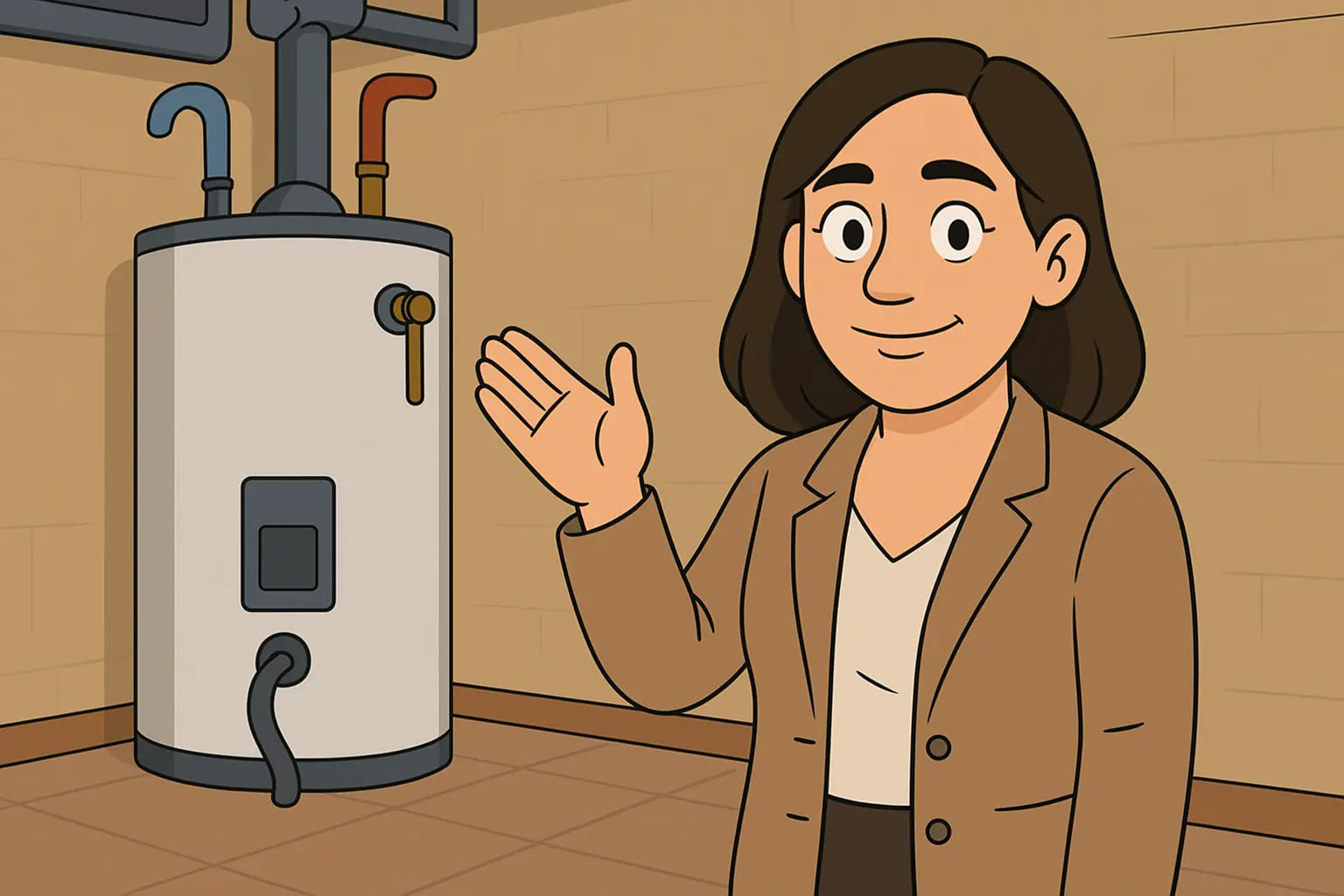Hey there, hot water heroes 🔥👋
It’s your girl Savvy Mavi here, and if you’re anything like me, you’ve probably learned the hard way how crucial a solid water heater is. Cold showers in the morning? Big yikes. High energy bills from an old, cranky tank? Nope, not on my watch.
Today we’re diving into the world of 50–60 gallon electric water heaters—specifically how to install them like a pro and troubleshoot common headaches without losing your cool (or your hot water!). Let’s turn up the heat and take the guesswork out of this household essential 💡
Why 50–60 Gallons Is the Sweet Spot for Families
If you’ve got a house full of shower-loving humans, this tank size is your MVP. A 50–60 gallon heater can comfortably support a family of 3–5 people. These aren’t just big water buckets—they’re carefully engineered systems designed for capacity, efficiency, and comfort.
Bonus? They’re electric. That means:
-
Fewer emissions
-
Easy to install (compared to gas)
-
Usually cheaper to maintain
-
Compatible with solar backup systems ☀️🔋
In fact, Energy.gov’s guide gives electric models high marks for energy efficiency—especially when paired with smart thermostats or heat pump upgrades.
Before You Install: Let’s Talk Prep Work 🛠️
Installing a 50–60 gallon electric water heater isn’t rocket science—but it is home science. If you're DIY-inclined, here’s what you need before you unbox:
-
A dedicated 240V electrical circuit
-
Enough floor space for the tank footprint and clearance
-
Drainage for the T&P valve discharge
-
A helper to lift (seriously, don’t risk your back)
And don’t forget to check local building codes. In many places, a permit is required for water heater installs, especially if you're upgrading or rerouting plumbing. You can confirm this on your local building authority’s site or municipality page.
Pro tip: Always turn off the breaker at the panel and test for voltage before you disconnect or install anything. Want to know what the pros recommend? Check out Hot Water Solutions’ step-by-step guide—it’s incredibly user-friendly.
Step-by-Step Installation Breakdown
Here’s the CliffsNotes version of how to install a 50–60 gallon electric unit:
-
Shut off water and power.
-
Drain the old heater.
-
Disconnect the electrical and water lines.
-
Move the old unit out of the way.
-
Set the new unit in place.
-
Connect water lines (use new dielectric unions!).
-
Wire up the electric—match red-to-red, black-to-black.
-
Fill the tank before powering on.
-
Turn on the breaker and test.
Want to nerd out with the full install manual? Manufacturers like Rheem and A.O. Smith have detailed instruction PDFs on their sites—super handy for model-specific quirks.
Common Troubleshooting Woes (and How to Fix 'Em)
Even the best units can run into hiccups. Here’s your cheat sheet for what to do when your heater gets fussy:
1. No Hot Water
This usually means a tripped breaker, blown upper heating element, or a failed thermostat.
-
First, check the panel.
-
Then test the element for continuity with a multimeter (easy instructions on AO Smith).
-
Replace if needed—it’s usually a $20 fix!
2. Water Too Hot
That’s often a thermostat problem. Reset to 120°F. If it keeps overheating, the thermostat may need replacing.
3. Leaky T&P Valve
The temperature and pressure relief valve is a safety must-have. But if it’s dripping, the culprit could be:
-
High system pressure
-
Faulty valve
-
Expansion tank failure
Check pressure with a gauge, or consult a local plumber if it’s over 80 psi.
4. Rusty or Smelly Water
Yikes. That’s your anode rod waving the white flag. These should be replaced every 3–5 years to prevent tank corrosion. Learn how with this helpful article from This Old House.
The Reset Button Mystery 🔘
If your heater has gone totally cold and you’ve already checked the breaker and thermostat, it might be time to press the reset button on the upper thermostat panel.
But—if it trips more than once a month, that’s a red flag. Replacing the upper heating element or thermostat could be the fix, but if it keeps happening, there could be deeper electrical issues a licensed electrician should handle.
Savvy Shopping: What to Look for in a 50–60 Gallon Model
If you’re buying new (and browsing my faves over at The Furnace Outlet 👀), here’s what matters:
-
Warranty: Look for 6–12 years.
-
Dual-element design: Faster recovery time.
-
Smart features: Wi-Fi control is 💯.
-
Insulation rating (R-value): Higher means better efficiency.
-
Drain valve material: Brass > plastic.
Some models also qualify for federal tax credits if they meet ENERGY STAR® ratings. Always check!
When to Call in Backup 📞
I get it—DIY has its limits. Here’s when it’s time to tap a pro:
-
You don’t have a dedicated 240V circuit
-
The tank leaks from the bottom (probably shot)
-
Water is pooling around electrical wires 😱
-
You smell burning plastic or see scorch marks
In those cases, skip the forums and call an experienced plumber or licensed electrician. Don’t play with your safety, friends!
Wrap-Up from Your Water Heater Wingwoman 💁💦
Alright, hot shot—you’ve officially graduated from "what even is a T&P valve" to "I can install and troubleshoot like a mini pro!" Whether you're replacing an old model or just looking to stay ahead of issues, a little knowledge goes a long way.
Bookmark this guide, send it to your group chat, and keep your hot water flowing and frustration low. And hey—if you’re ready to shop smart, you know I’m sending you straight to The Furnace Outlet’s top picks.
Need more information about heating elements in your water heater? Visit: How to Test and Replace Heating Elements in 50–60 Gallon Electric Water Heaters (Without Freaking Out).
Catch you next time with more savvy secrets and good vibes 🔧💃
—Mavi out.







